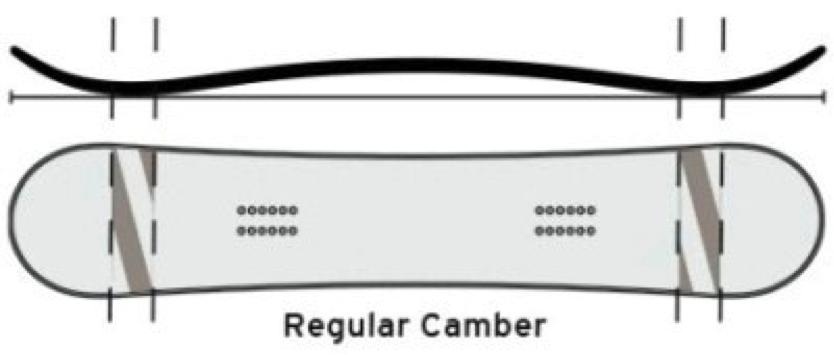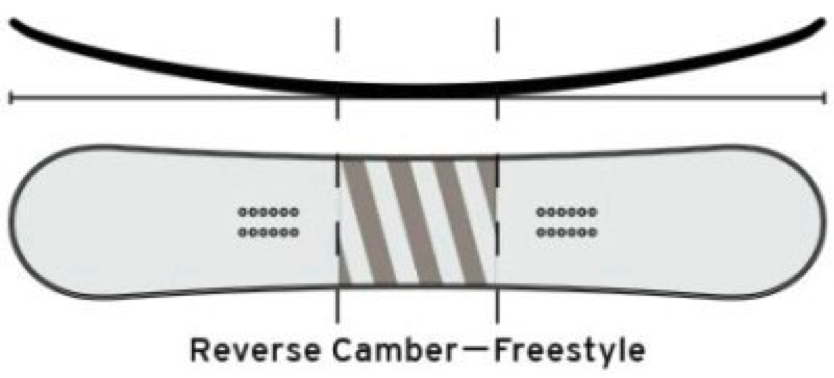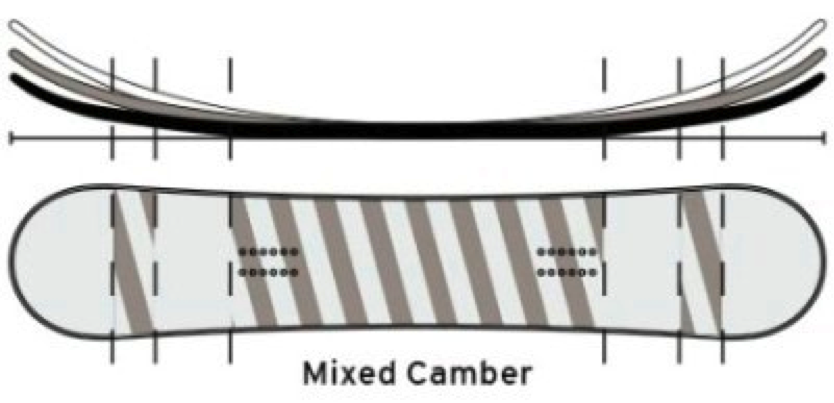Like to cruise groomed runs? Float through powder? Hammer chutes? Or ride the rails? The right snowboard for you is one designed for the terrain you prefer. With so many choices, it can be hard to zero-in on that perfect ride. The categories tend to blend together as you go from pipe and park to all mountain to freeride. This page will help you understand the different snowboard types and their uses, as well as give you helpful information about the size, flex, and shape of the board you should be looking for.
Pipe and Park
Light, short, flexible snowboards with twin tips that excel when grinding rails, jibbing boxes or hitting jumps, spins and tricks. Some offer heavy-duty edges and bases that can absorb a beating from rails and tree trunks. Usually you are going to find that these decks have a softer flex as well as a “relaxed” side cut.
- A softer snowboard is going to be a bit more forgiving on your landings. If you don't come all the way around on that 540, a soft flex will let you cheat it around, and still impress your friends. The softer flex also allows for better manipulation of the board on rails.
- A park snowboard will generally have a relaxed side cut so it does not want to turn as hard. Again this makes for a more forgiving feel. If you are spending most of your days lapping out the park then you will definitely want to get a park specific snowboard.
Good for riders who want to push their limits in terrain parks, not so good for stability or cruising fast on hard snow.
All Mountain/Freestyle
A freestyle snowboard is one of the most versatile boards out there. Often it is a board that can handle any challenge you throw at it. From the park to groomers to backcountry this board will hold its own. Typically these boards are going to be a mid-stiff flex. They will also have a good amount of side cut. Both the stiffer flex and more side cut combine to make all mountain freestyle boards very responsive. Most boarders (perhaps 90%, and maybe 95% of novices) ride all-mountain boards. Because of their versatility, all-mountain boards are good for beginners who are still learning what terrain they like.
Freeride
A freeride snowboard is a close cousin to the freestyle board. Freeride boards are good for riding around the whole mountain, just not much in the terrain park. Freeride snowboards are usually very fast, very responsive, and very good in powder and on groomers. These boards are going to be on the stiff side. Basically the stiffer a snowboard is the better it is at holding speed. You will find that freeride boards are generally on the longer side as well. A “freerider” is going to spend a lot of time in the steeps and on groomed runs where speeds are higher than in the park. If you like to bomb the entire mountain but stay out of the park, then you're a freerider.
Do note that a freeride snowboard is an aggressive board, they are usually a little much for beginners.
Big Mountain
Big Mountain is for the guys dropping big backcountry steeps. They are not riding resorts with these boards. While it is sometimes tough to tell the difference among park, freestyle, or freeride snowboards, big mountain boards will be much easier to pick out of a line up. These snowboards have all kinds of different shapes. Some are tapered others are rockered and many of them use a combination of both. Big Mountain boards are harder to find and selection is limited due to the specific nature and limited access of big mountain riding. For most casual backcountry riders a freeride snowboard is going to be a great answer.
Things to keep in mind:
- For a park or freestyle board you should err on the shorter side. Shorter snowboard = easier to spin.
- Beginners should also look at boards that are on the shorter side, they will be easier to maneuver.
- Big mountain and freeride boards you should go longer. Longer snowboard = higher speed and better float on powder.
- For all of those little up and comers you should also consider that they are still growing, so buying a bigger snowboard here is OK as long as it is not too big.
Snowboard Sizing Chart
|
Your Height (in) |
Your Weight (lbs) |
Snowboard Size (cm) |
|
105 - 120 |
120 - 135 |
|
|
4’10” - 5’ |
115 - 130 |
130 - 140 |
|
5’ - 5'2" |
125 - 140 |
135 - 145 |
|
5’2” - 5'4" |
135 - 150 |
140 - 150 |
|
5’4” - 5'6" |
145 - 160 |
145 - 155 |
|
5’6” - 5'8" |
155 - 170 |
150 -160 |
|
5’8” - 5'10" |
165 - 180 |
155 - 165 |
|
6'+ |
185+ |
160 - 170 |
Flex
Flex refers to a board’s give, its receptiveness to twisting. It’s determined by the fiberglass weave used inside the board. Biaxial (2-way) weaves are more flexible; triaxial (3-way) and a few quadaxial (4-way) weaves are stiffer.
A board can flex 2 ways:
Longitudinal flex: along its length (most important to most boarders).
Torsional flex: flex across its width.
How to correctly test flex at a store:
Longitudinal flex: Place a board’s tail on the ground, preferably on carpet. Boards have 2 binding mounts. Place an arm around the higher mount, as if wrapping an arm around a friend's shoulder.
With the board at about a 45° angle, use your other hand to press down on the lower mount. The idea: Mimic the pressure feet apply to a board. Don’t grab a board by its nose and push on its center. Lots of people do this, but no one rides on the center of a board.
Torsional flex: Place both feet on the tail. Grip the nose with both hands and firmly twist in opposite directions. Realize, though, that maxing a board's torsional flex requires more force than most people can apply in this manner.
What the tests tell you:
Forgiving and easy to turn. Usually preferred by beginners, riders with lower body weights and park riders.Soft (easier to flex):
Stiff (harder to flex): Provides more grip when turning; holds speed better than a softer board. Can better hold an edge when descending fast. Usually the choice of freeriders.
Shapes
Directional boards are dimensionally designed to be ridden forward (downhill). Usually found in freestyle and freeride boards and most definitely in big mountain boards.

True twins are symmetrical in construction and exhibit no difference in performance whether you ride them forward or backward. This makes them a popular choice for pipe and park riding.
 Directional twin boards are good for people who ride all over the mountain, from groomers to the park. Some directional twins are set back with a longer nose for better float in powder.
Directional twin boards are good for people who ride all over the mountain, from groomers to the park. Some directional twins are set back with a longer nose for better float in powder.
Camber or Rocker?
Camber delivers a lively, stable ride and provides pop and responsiveness on hardpack or groomed runs, especially when powering out of turns. Experienced, speed-oriented riders favor cambered boards. Camber is also known as regular or positive camber.

Rocker (aka reverse camber) creates upturned noses and tails. The design excels in powder and when jibbing or riding rails in the park. Rockered boards are softer than cambered boards and often appeal to novice riders. Experienced riders, though, can still coax powerful rides out of them.

Mixed camber (or, modified rocker) has exploded in popularity, and manufacturers have hatched lots of rocker variations to address specific performance attributes, too many to explain here. For example Never Summer boards are going to be rocker in the middle and cambered on the tip and tail. While Never Summer chose to make this their signature camber, most other manufacturers are going to have every type of camber and rocker combo you can come up with.


